Robert Millikan, an eminent American physicist

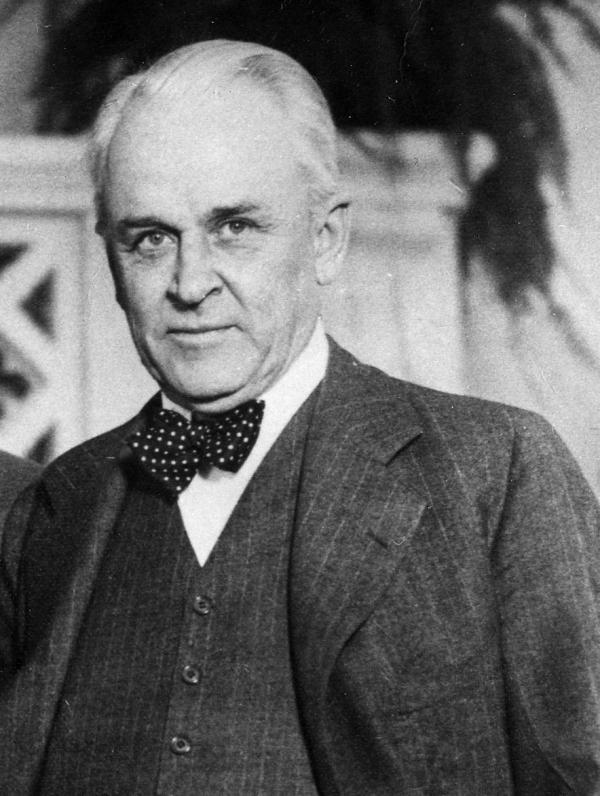 Robert Millikan
Robert MillikanSummary of Robert Millikan's biography
Full name: Robert Andrews Millikan
Date of birth: March 22, 1868
Place of Birth: Morrison, Illinois
Profession: scientist and physicist
Reason for fame: discovery of the electric charge of the electron during the oil drop experiment
Awards: Nobel Prize in Physics 1923 and Franklin Medal 1937
Died: December 19, 1953
 Biography of Robert Millikan
Biography of Robert MillikanBiography of Robert Millikan
Robert Andrews Millikan was born on March 22, 1868 in Morrison, Illinois. He was the fifth of seven children. His father, Joseph Millikan, was a Methodist minister and his mother, Mary Jane Andrews, was a school teacher. As a child, Millikan was very interested in studying science and mathematics. During primary and secondary school, he showed his talent in these fields. After graduating from high school in 1885, Millikan entered Oberlin College in Ohio.
Robert Andrews Millikan was an eminent American physicist who became world famous for his discovery of electron charge and its accurate measurement in 1913. He is also known for his extensive research in optical radiation and photoelectricity. Millikan received numerous scientific awards during his lifetime, including the Nobel Prize in Physics in 1923. He is considered one of the pioneers of modern experimental physics and had a significant impact on the development of physics in the 20th century.
Robert Millikan's Higher Education
Millikan studied physics and mathematics at Oberlin College. During his studies, he studied under distinguished teachers, including Charles Clayton and Charles Ritchell. Millikan graduated from Oberlin College with a bachelor's degree in 1891, and in the same year he worked as an assistant professor at Columbia University in New York.
Millikan went on to study at Columbia University under the famous physicist Albion Wedworth Fuller. In 1893, he succeeded in obtaining his doctorate degree in physics by presenting his doctoral thesis on the measurement of electric potential difference.
One of the memories of this scientist's studies is given below:
At the end of my second year, my Greek teacher asked me to teach elementary physics in the introductory section next year. To my reply that I do not know physics at all, he replied: “Anyone who can do well in my Greek can teach physics.
“I said, 'Okay, you'll have to suffer the consequences, but I'll try and see what I can do with it.'
I immediately bought a book of Avery's Elements of Physics, and spent the greater part of the summer vacation of 1889 at home—trying to master the subject. I doubt whether I have ever taught better in my life than I did in my first physics course in 1889. I was interested in keeping my knowledge above that of the class.
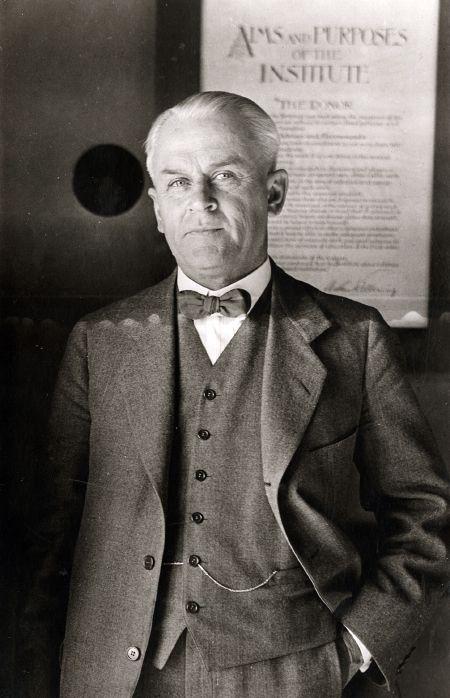 About Robert Millikan
About Robert Millikandiscovery of electron charge; Robert Millikan's scientific masterpiece
One of the most important scientific achievements of Robert Millikan was the discovery of the charge of the electron. In 1909, Millikan succeeded in accurately measuring the electron charge using the oil drop experiment. In this experiment, Millikan suspended charged oil droplets in an electric field and then measured their charge. By conducting this experiment, Millikan found that the charge of the electron is a unit of electric charge, which is 1.602 x 10^-19 coulombs. This discovery revolutionized our understanding of the nature of electricity and the structure of the atom.
Other activities of Robert Millikan in the field of physics
In addition to discovering the charge of the electron, Robert Millikan did other important works in the field of physics. He conducted extensive research and made significant achievements in various fields of physics, including optical radiation, photoelectricity, and cosmic rays.
In the field of photoelectricity, Millikan helped to explain the phenomenon of the photoelectric effect. He discovered that light rays can remove electrons from the surface of metallic materials. This phenomenon led to the development of photoelectric cells and their applications in various fields, including photography and computer technologies. Millikan was also one of the pioneers in the study of cosmic rays. Using research balloons, he investigated cosmic rays at high altitudes and helped to understand the nature and origin of these rays.
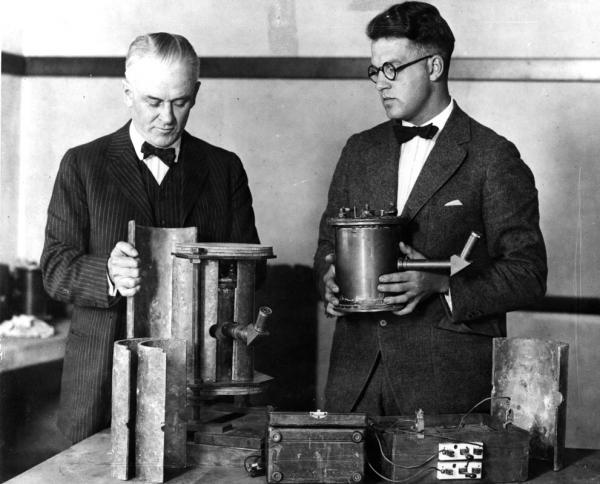 Discoveries of Robert Millikan
Discoveries of Robert MillikanPersonal life of Robert Millikan
Robert Millikan married Greta Irwin Blanchard (1955-1876) in 1902. They had three sons, whose names are: It was Clark Blanchard, Glenn Allen and Max Franklin.
Famous quotes by Robert Millikan
– If Kevin Harding's equation and Stone's curve are even approximately correct, as I am sure they are, for Dr. Cameron and I have calculated with their help the maximum energy produced in radioactive changes and found that it is well checked by observation, So this assumption of the evolution of energy through the disintegration of common elements is on the one hand a childish utopian dream and on the other a silly bugaboo.
– No more earnest search for truth, no intellectual with more penetrating insight is to be found anywhere, and yet every one of them has been a religious and dogmatic follower.
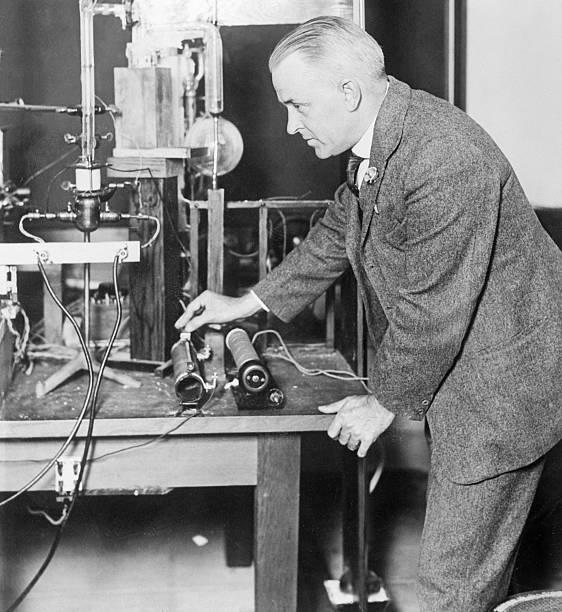 Robert Millikan conducting a scientific experiment
Robert Millikan conducting a scientific experimentRobert Millikan Awards and Honors
Robert Millikan received numerous scientific awards during his lifetime. In 1923, he was able to win the Nobel Prize for the discovery of electron charge and measurement, and the Franklin Medal was awarded to this scientist in 1937.
Death of Robert Millikan
Robert Millikan died of a heart attack in 1953 at the age of 85 at his home in San Marino, California, and was buried in the “Court of Honor” at Forest Lawn Memorial Park Cemetery in Glendale, California.
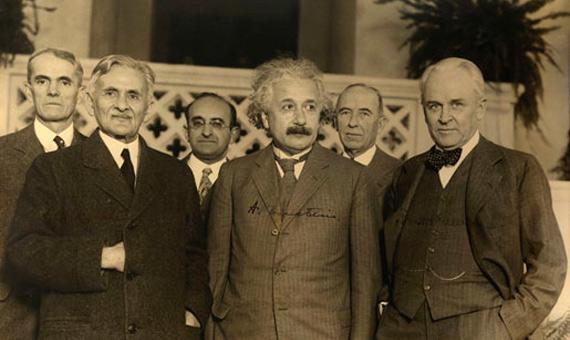 Robert Millikan next to Einstein
Robert Millikan next to EinsteinA final word about Robert Millikan
Robert Millikan was one of the great physicists of the 19th century, who played a fundamental role in the development of physics with his valuable discoveries and research. His discovery of the charge of the electron and his detailed studies of light and photoelectric radiation deepened our understanding of the physical world and had far-reaching effects on the development of modern technologies. With his perseverance and commitment to science, Millikan inspired generations of scientists and made his name as one of the most prominent figures in the history of science.
In the end, we must say that Robert Millikan was a creative, accurate and hardworking scientist who, with his perseverance and commitment to science, was able to achieve valuable achievements and record his name as one of the prominent figures in the history of science.
compilation: Cover biographical section






